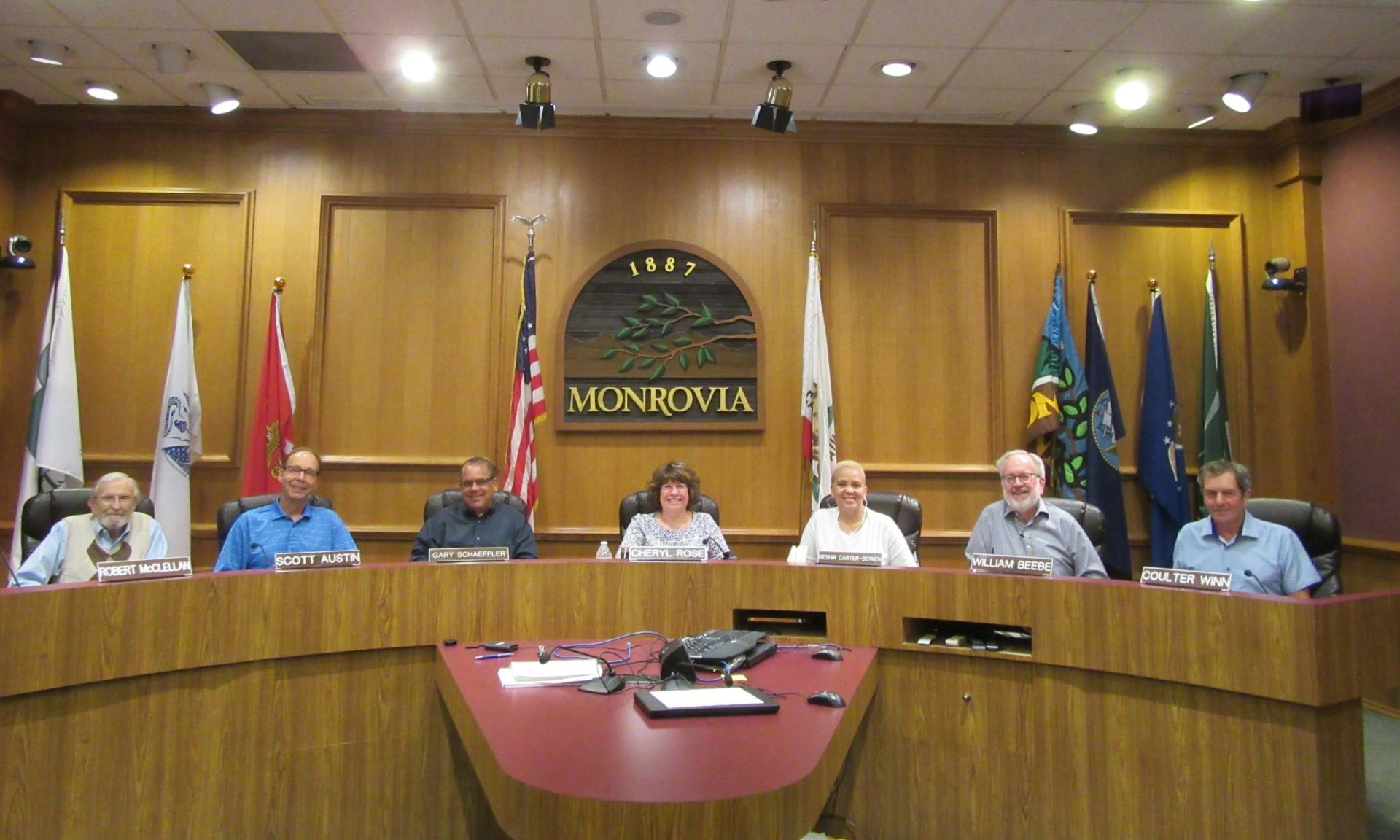
By Terry Miller
Monrovia is a mere heartbeat away from Hollywood, as the crow flies — or whichever cliché you’d care to scribe. But this year, above all, Monrovia has once again made international headlines as it seems everyone is talking, writing or making films about the 1969 Manson Family murders and therefore Monrovia High School is in the forefront thanks to one former student and cheerleader: Leslie Van Houten.
Of course there was also “The Night Stalker,” Richard Ramirez, who also garnered considerable ink and infamous notoriety for Monrovia. From 1984 -1985 Ramirez spent his life raping and torturing over 25 victims and killing more than a dozen people. Most of these crimes were committed in the victims’ California homes; one in Rosemead, Arcadia and one 83-year-old Monrovia woman named Ma Bell.
However, it was 50 years ago that Charles Manson was in the spotlight and everyone, it seems, is now cashing in on what was arguably the most shocking story and crime of the century. None more so than filmmaker Quentin Tarantino’s latest bizarre offering, “Once upon a time in Hollywood.” Additionally, there’s a plethora of docudramas and a few extremely well-written books that accurately account for not only the killings that gripped the world but also the well-known musicians allegedly involved with Manson in some shape or form.
By far, the most honest and well-written book out now was penned by veteran British journalist Ivor Davis who not only covered the Manson Trial for The London Daily Express but also followed the Beatles on tour of the U.S. in 1964 — and with knowing the Fab Four, Davis can unequivocally state that the Beatles didn’t make Manson’s family do it (murders).
In “Manson Exposed: A Reporter’s 50 Year Journey Into Madness and Murder,” Davis grabs the reader with intuitive and dazzling writing combined with what is now rare investigative journalism — indeed a remarkable follow-up to his 1970 “Five to Die” account of the Manson killings and trial.
Davis is by far, the author who will not rest until you get the facts: penned with pronounced wit, humor and wordplay unlike any other book on the subject, full stop.
As leader of the notorious “family,” Manson orchestrated a two-day murder spree in August 1969 which left seven people dead. Manson died last year in prison at the age of 83, after spending nearly 50 years behind bars.
What is stunning is how many films, movies and books have been devoted to these grisly, grotesque murders, all with a Monrovia connection.
After a few months in a commune in Northern California, a Monrovia High school cheerleader, Van Houten, met Catherine Share and Bobby Beausoleil and moved in with them and another woman during the summer of 1968. The four broke up after jealous arguments and Share left to join Charles Manson’s commune. Van Houten, then aged 19, followed Share. At this time, she phoned her mother to say she was dropping out and would not be making contact again. Manson decided when they would eat, sleep, and have sex, and with whom they would have sex. He also controlled the taking of LSD, giving followers larger doses than he himself took. According to Manson, “When you take LSD enough times, you reach a state of nothing, of no thought.” According to Van Houten, she became “saturated in acid” and could not grasp the existence of those living a non-psychedelic reality.
Filmmaker John Waters had actively advocated for Van Houten’s parole although he acknowledges that the horror in which Manson’s female accomplices are still held means public support for her release may be futile. California Governor Gavin Newson agreed and in June denied her latest appeal for parole.
Van Houten has fired three lawyers in succession for claiming her actions were attributable to Manson’s control over her. When her lawyer was asking an expert witness about the effect of LSD on judgment, Van Houten allegedly shouted that, “This is all such a big lie; I was influenced by the war in Vietnam and TV.”
On March 29, 1971, she was convicted of murder along with the other defendants of the “family.” During the sentencing phase of the trial, in an apparent attempt to exonerate Manson, Van Houten testified that she had committed a killing in which she was not, in fact, involved.
Van Houten said in court “you can’t undo something that is done.” In cross-examination, Van Houten aggressively implicated herself in inflicting wounds while the victim was living, and severely wounding the victim, severing her spine, which might have been fatal by itself. She vehemently denied acting on instructions from Manson and said a court-appointed attorney who “had a lot of different ideas on how to get me off” had told her to claim Manson ordered the killings.
Van Houten attended Monrovia High School in the late 1960s. Her mother was also a Monrovia school teacher. Van Houten also had a short-lived affair with another Monrovia High student and also became pregnant at 14. The boyfriend, Bobby Mackie, and Van Houten eventually “dropped out” and moved to Haight Ashbury in San Francisco.
“At Monrovia High School, Van Houten was sophomore class princess at homecoming. She was a cheerleader. Early in 1968, Leslie ‘dropped out of the straight world,’” her mother recalled according to court transcripts.
Her attorneys said she was 19 when she took part in the crimes, and that she has been a model prisoner. But any release has always been strongly opposed by the families of the victims as well as prosecutors and many others, according to a report in the LA Times.
Van Houten, who is serving a life prison term, was convicted of murder and conspiracy for participating with fellow Manson family members Charles “Tex” Watson and Patricia Krenwinkel in the August 1969 killings of grocer Leno La Bianca, 44, and his 38-year-old wife, Rosemary, who were each stabbed multiple times in their Los Feliz home.
The former Monrovia High School cheerleader did not participate in the Manson family’s killings of pregnant actress Sharon Tate and four others in a Benedict Canyon mansion the night before.
Other notable Monrovia High alum, albeit somewhat less notorious:
- George Trapp, NBA power forward /center.
- Corie Blount, NBA power forward.
- Hardiman Cureton, football player.
- Damon Griffin, NFL wide receiver.
- Chris Hale, NFL defensive back.
- Keith Lincoln, AFL running back.
- Johnny Lindell, MLB baseball player.
- Thomas J. Sargent, 2011 Nobel Prize Winner in Economics.
- Roy Zimmerman, NFL quarterback.






